Beijing 3rd day, China
Went to ZhongGuanCun in the morning to fix my netbook. ZhongGuanCun is like the silicon valley of China. There are many shops selling electronics and many tech companies’ headquarters are based here. 2 of the top Universities in China, Tsing Hua University and Beijing University are around this area as well.
My netbook seems like it was locked down since I was in Krygyzstan. I think my netbook has a virus. Since the OS is in Polish, no one really know how to fix it and I just want to reinstall Windows XP.
An English version of Windows XP home edition cost around USD$230 but those guys helped me to reinstall everything for 100 Yuan~USD$14.
Computer repair shop
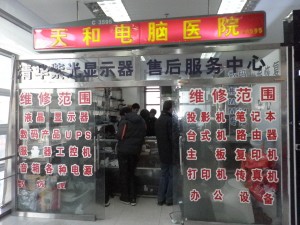
New subway line to the Olympic Park
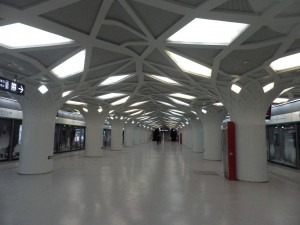
Olympic Stadium, the Bird Nest
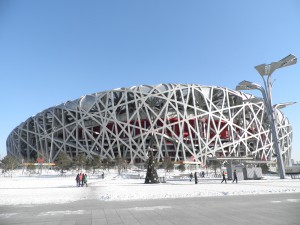
Olympic Park
Also a place for newly weds to take pictures
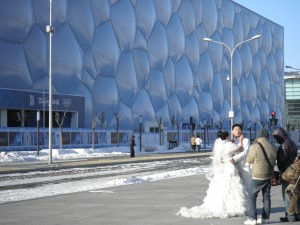
A sculpture of an old Chinese lady playing pool

Real Estate prices are very expensive in China, especially in big cities such as Shanghai, Beijing and Shenzhen. It’s a big burden for ordinary Chinese to buy a house and housing price are pushed up by speculation. Seems like a next bubble to me.
Article in Washington Post, In China, fear of a real estate bubble
Salary for university graduate is around 2000-3000 Yuan (USD$300-500) but a small one bedroom apartment, 600 square feet around the 4th outer ring road cost 1.5 million Yuan ~USD$220,000.
For around USD$200,000, you can buy a house in many city suburbs in the US.
(1500,000 Yuan / 3000 Yuan = 500). So using 100% of his or her salary, an average workers have to for 500 months or more than 40 years to pay off the loan not including interest. Plus housing in China is not free hold and the land is only leased for 70 years. Since the communist party has only in power for 60 years, no one knows what will happen yet once the lease is due. But investors and speculators are still piling in like the property will be theirs forever.
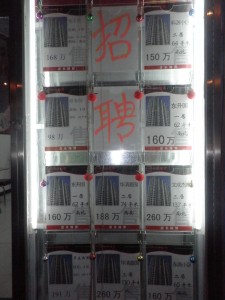
Met up Brandon and his wife for dinner. Brandon treated me to a local Beijing style restaurant.
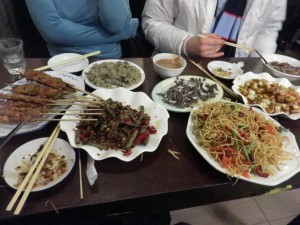
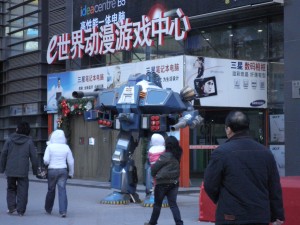
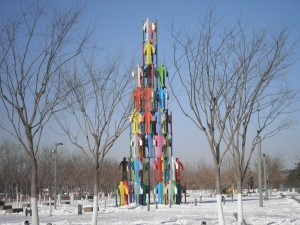

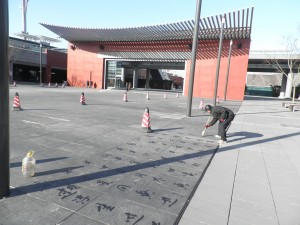
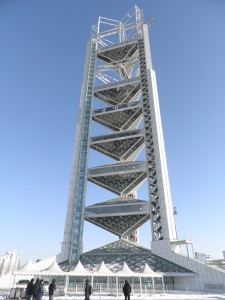

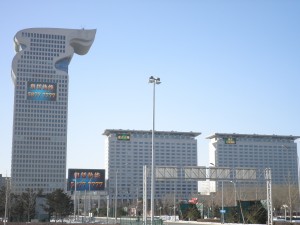
![P1102322 [640x480]](http://journey26.com/blog/wp-content/uploads/2010/01/P1102322-640x480-300x225.jpg)
![P1102324 [640x480]](http://journey26.com/blog/wp-content/uploads/2010/01/P1102324-640x480-300x225.jpg)
![P1102330 [640x480]](http://journey26.com/blog/wp-content/uploads/2010/01/P1102330-640x480-300x225.jpg)
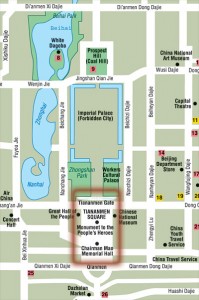
![P1102338 [640x480]](http://journey26.com/blog/wp-content/uploads/2010/01/P1102338-640x4801-300x225.jpg)
![P1102344 [640x480]](http://journey26.com/blog/wp-content/uploads/2010/01/P1102344-640x480-300x225.jpg)
![P1102345 [640x480]](http://journey26.com/blog/wp-content/uploads/2010/01/P1102345-640x480-300x225.jpg)
![P1102350 [640x480]](http://journey26.com/blog/wp-content/uploads/2010/01/P1102350-640x480-300x225.jpg)
![P1102353 [640x480]](http://journey26.com/blog/wp-content/uploads/2010/01/P1102353-640x480-300x225.jpg)
![P1102361 [640x480]](http://journey26.com/blog/wp-content/uploads/2010/01/P1102361-640x480-300x225.jpg)
![P1102366 [640x480]](http://journey26.com/blog/wp-content/uploads/2010/01/P1102366-640x480-300x225.jpg)
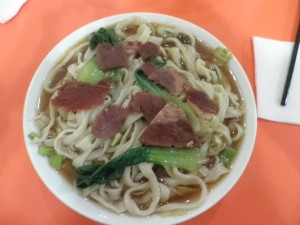
![P1092274 [640x480]](http://journey26.com/blog/wp-content/uploads/2010/01/P1092274-640x480-300x225.jpg)
![P1092275 [640x480]](http://journey26.com/blog/wp-content/uploads/2010/01/P1092275-640x480-300x225.jpg)
![P1092276 [640x480]](http://journey26.com/blog/wp-content/uploads/2010/01/P1092276-640x480-300x225.jpg)
![P1092283 [640x480]](http://journey26.com/blog/wp-content/uploads/2010/01/P1092283-640x480-300x225.jpg)
![P1092285 [640x480]](http://journey26.com/blog/wp-content/uploads/2010/01/P1092285-640x480-300x225.jpg)
![P1092292 [640x480]](http://journey26.com/blog/wp-content/uploads/2010/01/P1092292-640x480-300x225.jpg)
![P1092294 [640x480]](http://journey26.com/blog/wp-content/uploads/2010/01/P1092294-640x480-300x225.jpg)
![P1092299 [640x480]](http://journey26.com/blog/wp-content/uploads/2010/01/P1092299-640x480-300x225.jpg)
![P1092302 [640x480]](http://journey26.com/blog/wp-content/uploads/2010/01/P1092302-640x480-300x225.jpg)
![P1092301 [640x480]](http://journey26.com/blog/wp-content/uploads/2010/01/P1092301-640x480-300x225.jpg)
![P1092304 [640x480]](http://journey26.com/blog/wp-content/uploads/2010/01/P1092304-640x480-300x225.jpg)
![P1092317 [640x480]](http://journey26.com/blog/wp-content/uploads/2010/01/P1092317-640x480-300x225.jpg)
![P1092320 [640x480]](http://journey26.com/blog/wp-content/uploads/2010/01/P1092320-640x480-300x225.jpg)
![P1092321 [640x480]](http://journey26.com/blog/wp-content/uploads/2010/01/P1092321-640x480-300x225.jpg)
![P1082211 [640x480]](http://journey26.com/blog/wp-content/uploads/2010/01/P1082211-640x480-300x225.jpg)
![P1082213 [640x480]](http://journey26.com/blog/wp-content/uploads/2010/01/P1082213-640x480-300x225.jpg)
![P1082222 [640x480]](http://journey26.com/blog/wp-content/uploads/2010/01/P1082222-640x480-300x225.jpg)
![P1082220 [640x480]](http://journey26.com/blog/wp-content/uploads/2010/01/P1082220-640x480-300x225.jpg)
![P1082221 [640x480]](http://journey26.com/blog/wp-content/uploads/2010/01/P1082221-640x480-300x225.jpg)
![P1082225 [640x480]](http://journey26.com/blog/wp-content/uploads/2010/01/P1082225-640x480-300x225.jpg)
![P1082227 [640x480]](http://journey26.com/blog/wp-content/uploads/2010/01/P1082227-640x480-300x225.jpg)
![P1082228 [640x480]](http://journey26.com/blog/wp-content/uploads/2010/01/P1082228-640x480-300x225.jpg)
![P1082232 [640x480]](http://journey26.com/blog/wp-content/uploads/2010/01/P1082232-640x480-300x225.jpg)
![P1082234 [640x480]](http://journey26.com/blog/wp-content/uploads/2010/01/P1082234-640x480-300x225.jpg)
![P1082238 [640x480]](http://journey26.com/blog/wp-content/uploads/2010/01/P1082238-640x480-300x225.jpg)
![P1082243 [640x480]](http://journey26.com/blog/wp-content/uploads/2010/01/P1082243-640x480-300x225.jpg)
![P1082246 [640x480]](http://journey26.com/blog/wp-content/uploads/2010/01/P1082246-640x480-225x300.jpg)
![P1082248 [640x480]](http://journey26.com/blog/wp-content/uploads/2010/01/P1082248-640x480-300x225.jpg)
![P1082249 [640x480]](http://journey26.com/blog/wp-content/uploads/2010/01/P1082249-640x480-300x225.jpg)
![P1082252 [640x480]](http://journey26.com/blog/wp-content/uploads/2010/01/P1082252-640x480-300x225.jpg)
![P1082256 [640x480]](http://journey26.com/blog/wp-content/uploads/2010/01/P1082256-640x480-300x225.jpg)
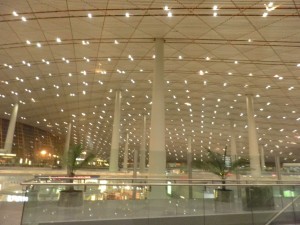
![P1082262 [640x480]](http://journey26.com/blog/wp-content/uploads/2010/01/P1082262-640x480-300x225.jpg)
![P1082264 [640x480]](http://journey26.com/blog/wp-content/uploads/2010/01/P1082264-640x480-300x225.jpg)
![P1082266 [640x480]](http://journey26.com/blog/wp-content/uploads/2010/01/P1082266-640x480-300x225.jpg)
![P1082269 [640x480]](http://journey26.com/blog/wp-content/uploads/2010/01/P1082269-640x480-300x225.jpg)
![P1072171 [640x480]](http://journey26.com/blog/wp-content/uploads/2010/01/P1072171-640x480-300x225.jpg)
![P1072172 [640x480]](http://journey26.com/blog/wp-content/uploads/2010/01/P1072172-640x480-300x225.jpg)
![P1072180 [640x480]](http://journey26.com/blog/wp-content/uploads/2010/01/P1072180-640x480-225x300.jpg)
![P1072184 [640x480]](http://journey26.com/blog/wp-content/uploads/2010/01/P1072184-640x480-300x225.jpg)
![P1072181 [640x480]](http://journey26.com/blog/wp-content/uploads/2010/01/P1072181-640x480-300x225.jpg)
![P1072186 [640x480]](http://journey26.com/blog/wp-content/uploads/2010/01/P1072186-640x480-300x225.jpg)
![P1072189 [640x480]](http://journey26.com/blog/wp-content/uploads/2010/01/P1072189-640x480-300x225.jpg)
![P1072192 [640x480]](http://journey26.com/blog/wp-content/uploads/2010/01/P1072192-640x480-300x225.jpg)
![P1072196 [640x480]](http://journey26.com/blog/wp-content/uploads/2010/01/P1072196-640x480-300x225.jpg)
![P1072197 [640x480]](http://journey26.com/blog/wp-content/uploads/2010/01/P1072197-640x480-300x225.jpg)
![P1072198 [640x480]](http://journey26.com/blog/wp-content/uploads/2010/01/P1072198-640x480-300x225.jpg)
![P1072199 [640x480]](http://journey26.com/blog/wp-content/uploads/2010/01/P1072199-640x480-300x225.jpg)
![P1072200 [640x480]](http://journey26.com/blog/wp-content/uploads/2010/01/P1072200-640x480-300x225.jpg)
![P1072201 [640x480]](http://journey26.com/blog/wp-content/uploads/2010/01/P1072201-640x480-300x225.jpg)
![P1072202 [640x480]](http://journey26.com/blog/wp-content/uploads/2010/01/P1072202-640x480-300x225.jpg)
![P1072204 [640x480]](http://journey26.com/blog/wp-content/uploads/2010/01/P1072204-640x480-225x300.jpg)
![P1072206 [640x480]](http://journey26.com/blog/wp-content/uploads/2010/01/P1072206-640x480-300x225.jpg)
![P1072207 [640x480]](http://journey26.com/blog/wp-content/uploads/2010/01/P1072207-640x480-300x225.jpg)
![CIMG6949 [640x480]](http://journey26.com/blog/wp-content/uploads/2010/01/CIMG6949-640x480-300x225.jpg)
![CIMG6952 [640x480]](http://journey26.com/blog/wp-content/uploads/2010/01/CIMG6952-640x480-225x300.jpg)
![P1072177 [640x480]](http://journey26.com/blog/wp-content/uploads/2010/01/P1072177-640x480-300x225.jpg)
![CIMG6958 [640x480]](http://journey26.com/blog/wp-content/uploads/2010/01/CIMG6958-640x480-300x225.jpg)
![CIMG6956 [640x480]](http://journey26.com/blog/wp-content/uploads/2010/01/CIMG6956-640x480-300x225.jpg)
![CIMG6960 [640x480]](http://journey26.com/blog/wp-content/uploads/2010/01/CIMG6960-640x480-300x225.jpg)
![CIMG6969 [640x480]](http://journey26.com/blog/wp-content/uploads/2010/01/CIMG6969-640x480-300x225.jpg)
![CIMG6975 [640x480]](http://journey26.com/blog/wp-content/uploads/2010/01/CIMG6975-640x480-300x225.jpg)
![CIMG6971 [640x480]](http://journey26.com/blog/wp-content/uploads/2010/01/CIMG6971-640x480-300x225.jpg)
![CIMG6972 [640x480]](http://journey26.com/blog/wp-content/uploads/2010/01/CIMG6972-640x480-300x225.jpg)
![CIMG6980 [640x480]](http://journey26.com/blog/wp-content/uploads/2010/01/CIMG6980-640x480-300x225.jpg)

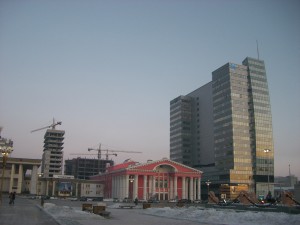
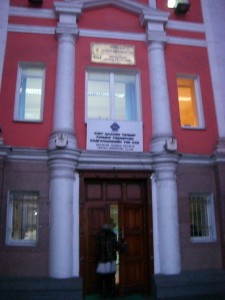
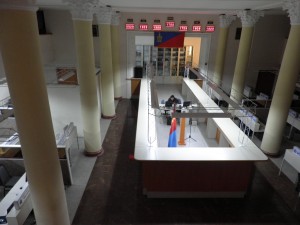
![CIMG6996 [640x480]](http://journey26.com/blog/wp-content/uploads/2010/01/CIMG6996-640x480-300x225.jpg)
![P1082242 [640x480]](http://journey26.com/blog/wp-content/uploads/2010/01/P1082242-640x480-300x225.jpg)
![CIMG6932 [640x480]](http://journey26.com/blog/wp-content/uploads/2010/01/CIMG6932-640x480-300x225.jpg)
![CIMG6934 [640x480]](http://journey26.com/blog/wp-content/uploads/2010/01/CIMG6934-640x480-300x225.jpg)
![CIMG6936 [640x480]](http://journey26.com/blog/wp-content/uploads/2010/01/CIMG6936-640x480-300x225.jpg)
![CIMG6939 [640x480]](http://journey26.com/blog/wp-content/uploads/2010/01/CIMG6939-640x480-300x225.jpg)
![CIMG6940 [640x480]](http://journey26.com/blog/wp-content/uploads/2010/01/CIMG6940-640x480-300x225.jpg)
![CIMG6943 [640x480]](http://journey26.com/blog/wp-content/uploads/2010/01/CIMG6943-640x480-300x225.jpg)
![CIMG6904 [640x480]](http://journey26.com/blog/wp-content/uploads/2010/01/CIMG6904-640x480-225x300.jpg)
![CIMG6906 [640x480]](http://journey26.com/blog/wp-content/uploads/2010/01/CIMG6906-640x480-300x225.jpg)
![CIMG6908 [640x480]](http://journey26.com/blog/wp-content/uploads/2010/01/CIMG6908-640x480-300x225.jpg)
![CIMG6910 [640x480]](http://journey26.com/blog/wp-content/uploads/2010/01/CIMG6910-640x480-300x225.jpg)
![CIMG6911 [640x480]](http://journey26.com/blog/wp-content/uploads/2010/01/CIMG6911-640x480-300x225.jpg)
![CIMG6914 [640x480]](http://journey26.com/blog/wp-content/uploads/2010/01/CIMG6914-640x480-300x225.jpg)
![CIMG6915 [640x480]](http://journey26.com/blog/wp-content/uploads/2010/01/CIMG6915-640x480-300x225.jpg)
![CIMG6916 [640x480]](http://journey26.com/blog/wp-content/uploads/2010/01/CIMG6916-640x480-300x225.jpg)
![CIMG6918 [640x480]](http://journey26.com/blog/wp-content/uploads/2010/01/CIMG6918-640x480-225x300.jpg)
![CIMG6917 [640x480]](http://journey26.com/blog/wp-content/uploads/2010/01/CIMG6917-640x480-300x225.jpg)
![CIMG6919 [640x480]](http://journey26.com/blog/wp-content/uploads/2010/01/CIMG6919-640x480-300x225.jpg)
![CIMG6920 [640x480]](http://journey26.com/blog/wp-content/uploads/2010/01/CIMG6920-640x480-300x225.jpg)
![CIMG6922 [640x480]](http://journey26.com/blog/wp-content/uploads/2010/01/CIMG6922-640x480-300x225.jpg)
![CIMG6924 [640x480]](http://journey26.com/blog/wp-content/uploads/2010/01/CIMG6924-640x480-300x225.jpg)
![CIMG6927 [640x480]](http://journey26.com/blog/wp-content/uploads/2010/01/CIMG6927-640x480-300x225.jpg)
![CIMG6928 [640x480]](http://journey26.com/blog/wp-content/uploads/2010/01/CIMG6928-640x480-300x225.jpg)
![CIMG6931 [640x480]](http://journey26.com/blog/wp-content/uploads/2010/01/CIMG6931-640x480-300x225.jpg)
![P1032128 [640x480]](http://journey26.com/blog/wp-content/uploads/2010/01/P1032128-640x480-300x225.jpg)
![P1032132 [640x480]](http://journey26.com/blog/wp-content/uploads/2010/01/P1032132-640x480-300x225.jpg)
![P1032133 [640x480]](http://journey26.com/blog/wp-content/uploads/2010/01/P1032133-640x480-300x225.jpg)
![P1032135 [640x480]](http://journey26.com/blog/wp-content/uploads/2010/01/P1032135-640x480-300x225.jpg)
![P1032136 [640x480]](http://journey26.com/blog/wp-content/uploads/2010/01/P1032136-640x480-300x225.jpg)
![P1032137 [640x480]](http://journey26.com/blog/wp-content/uploads/2010/01/P1032137-640x480-300x225.jpg)
![P1032140 [640x480]](http://journey26.com/blog/wp-content/uploads/2010/01/P1032140-640x480-300x225.jpg)
![P1032141 [640x480]](http://journey26.com/blog/wp-content/uploads/2010/01/P1032141-640x480-300x225.jpg)
![P1032144 [640x480]](http://journey26.com/blog/wp-content/uploads/2010/01/P1032144-640x480-300x225.jpg)
![P1032142 [640x480]](http://journey26.com/blog/wp-content/uploads/2010/01/P1032142-640x480-300x225.jpg)
![P1032147 [640x480]](http://journey26.com/blog/wp-content/uploads/2010/01/P1032147-640x480-300x225.jpg)
![P1032148 [640x480]](http://journey26.com/blog/wp-content/uploads/2010/01/P1032148-640x480-300x225.jpg)
![P1032151 [640x480]](http://journey26.com/blog/wp-content/uploads/2010/01/P1032151-640x480-300x225.jpg)
![P1032152 [640x480]](http://journey26.com/blog/wp-content/uploads/2010/01/P1032152-640x480-300x225.jpg)
![P1032155 [640x480]](http://journey26.com/blog/wp-content/uploads/2010/01/P1032155-640x480-300x225.jpg)
![P1032157 [640x480]](http://journey26.com/blog/wp-content/uploads/2010/01/P1032157-640x480-300x225.jpg)



![CIMG6872 [640x480]](http://journey26.com/blog/wp-content/uploads/2010/01/CIMG6872-640x480-300x225.jpg)
![CIMG6880 [640x480]](http://journey26.com/blog/wp-content/uploads/2010/01/CIMG6880-640x480-300x225.jpg)
![CIMG6882 [640x480]](http://journey26.com/blog/wp-content/uploads/2010/01/CIMG6882-640x480-225x300.jpg)
![CIMG6887 [640x480]](http://journey26.com/blog/wp-content/uploads/2010/01/CIMG6887-640x480-300x225.jpg)
![CIMG6886 [640x480]](http://journey26.com/blog/wp-content/uploads/2010/01/CIMG6886-640x480-300x225.jpg)
![CIMG6892 [640x480]](http://journey26.com/blog/wp-content/uploads/2010/01/CIMG6892-640x480-300x225.jpg)
![CIMG6896 [640x480]](http://journey26.com/blog/wp-content/uploads/2010/01/CIMG6896-640x480-300x225.jpg)
![CIMG6897 [640x480]](http://journey26.com/blog/wp-content/uploads/2010/01/CIMG6897-640x480-225x300.jpg)
![CIMG6868 [640x480]](http://journey26.com/blog/wp-content/uploads/2010/01/CIMG6868-640x480-300x225.jpg)
![P1022078 [640x480]](http://journey26.com/blog/wp-content/uploads/2010/01/P1022078-640x480-300x225.jpg)
![P1022079 [640x480]](http://journey26.com/blog/wp-content/uploads/2010/01/P1022079-640x480-300x225.jpg)
![P1022081 [640x480]](http://journey26.com/blog/wp-content/uploads/2010/01/P1022081-640x480-300x225.jpg)
![P1022082 [640x480]](http://journey26.com/blog/wp-content/uploads/2010/01/P1022082-640x480-300x225.jpg)
![P1022084 [640x480]](http://journey26.com/blog/wp-content/uploads/2010/01/P1022084-640x480-300x225.jpg)
![P1022085 [640x480]](http://journey26.com/blog/wp-content/uploads/2010/01/P1022085-640x480-300x225.jpg)
![P1022086 [640x480]](http://journey26.com/blog/wp-content/uploads/2010/01/P1022086-640x480-300x225.jpg)
![P1022090 [640x480]](http://journey26.com/blog/wp-content/uploads/2010/01/P1022090-640x480-300x225.jpg)
![P1022098 [640x480]](http://journey26.com/blog/wp-content/uploads/2010/01/P1022098-640x480-300x225.jpg)
![P1022095 [640x480]](http://journey26.com/blog/wp-content/uploads/2010/01/P1022095-640x480-300x225.jpg)
![P1022102 [640x480]](http://journey26.com/blog/wp-content/uploads/2010/01/P1022102-640x480-300x225.jpg)
![P1022105 [640x480]](http://journey26.com/blog/wp-content/uploads/2010/01/P1022105-640x480-300x225.jpg)
![P1022106 [640x480]](http://journey26.com/blog/wp-content/uploads/2010/01/P1022106-640x480-300x225.jpg)
![P1022107 [640x480]](http://journey26.com/blog/wp-content/uploads/2010/01/P1022107-640x480-300x225.jpg)
![P1022113 [640x480]](http://journey26.com/blog/wp-content/uploads/2010/01/P1022113-640x480-300x225.jpg)
![P1022114 [640x480]](http://journey26.com/blog/wp-content/uploads/2010/01/P1022114-640x480-300x225.jpg)
![P1022116 [640x480]](http://journey26.com/blog/wp-content/uploads/2010/01/P1022116-640x480-300x225.jpg)
![P1022122 [640x480]](http://journey26.com/blog/wp-content/uploads/2010/01/P1022122-640x480-300x225.jpg)
![P1022126 [640x480]](http://journey26.com/blog/wp-content/uploads/2010/01/P1022126-640x480-300x225.jpg)